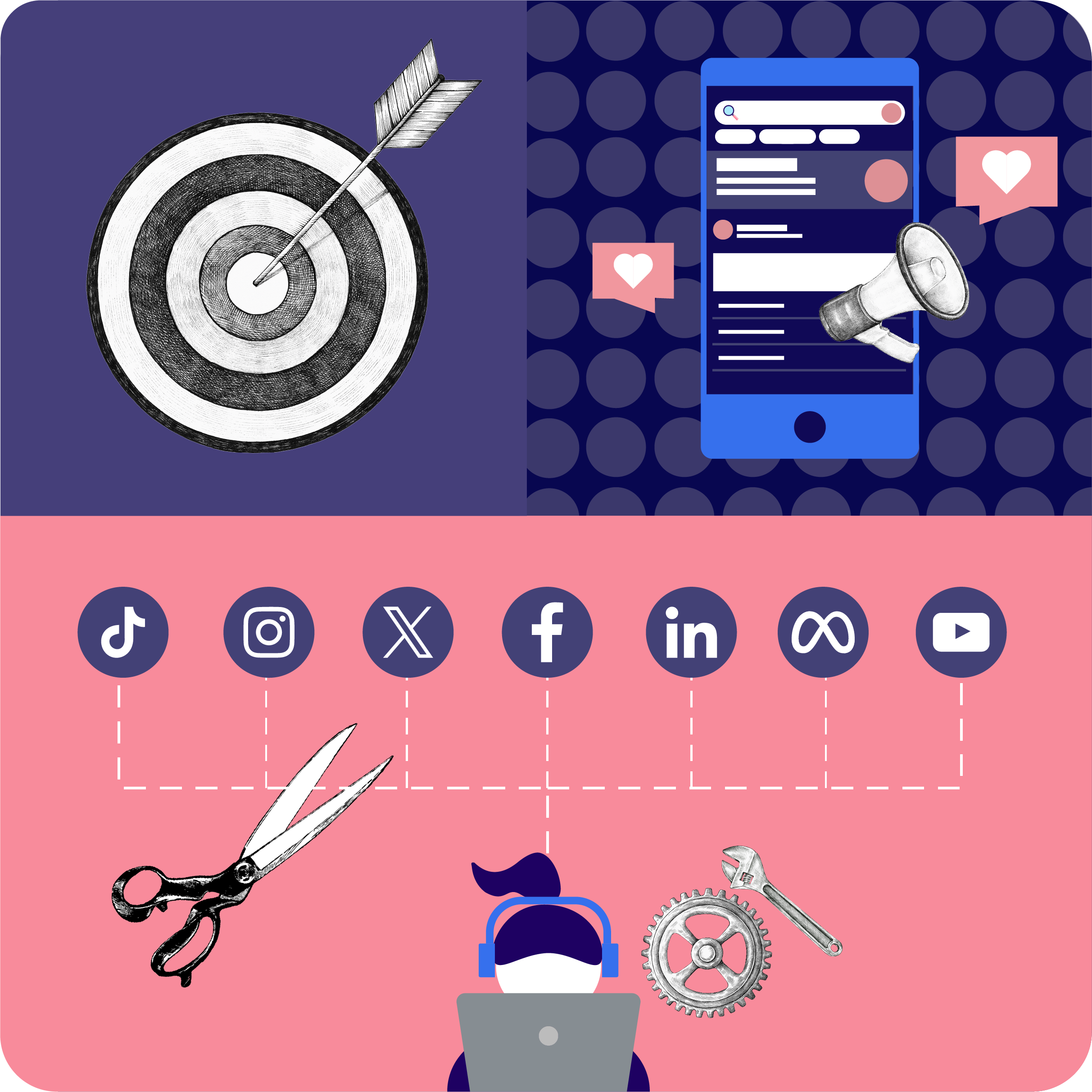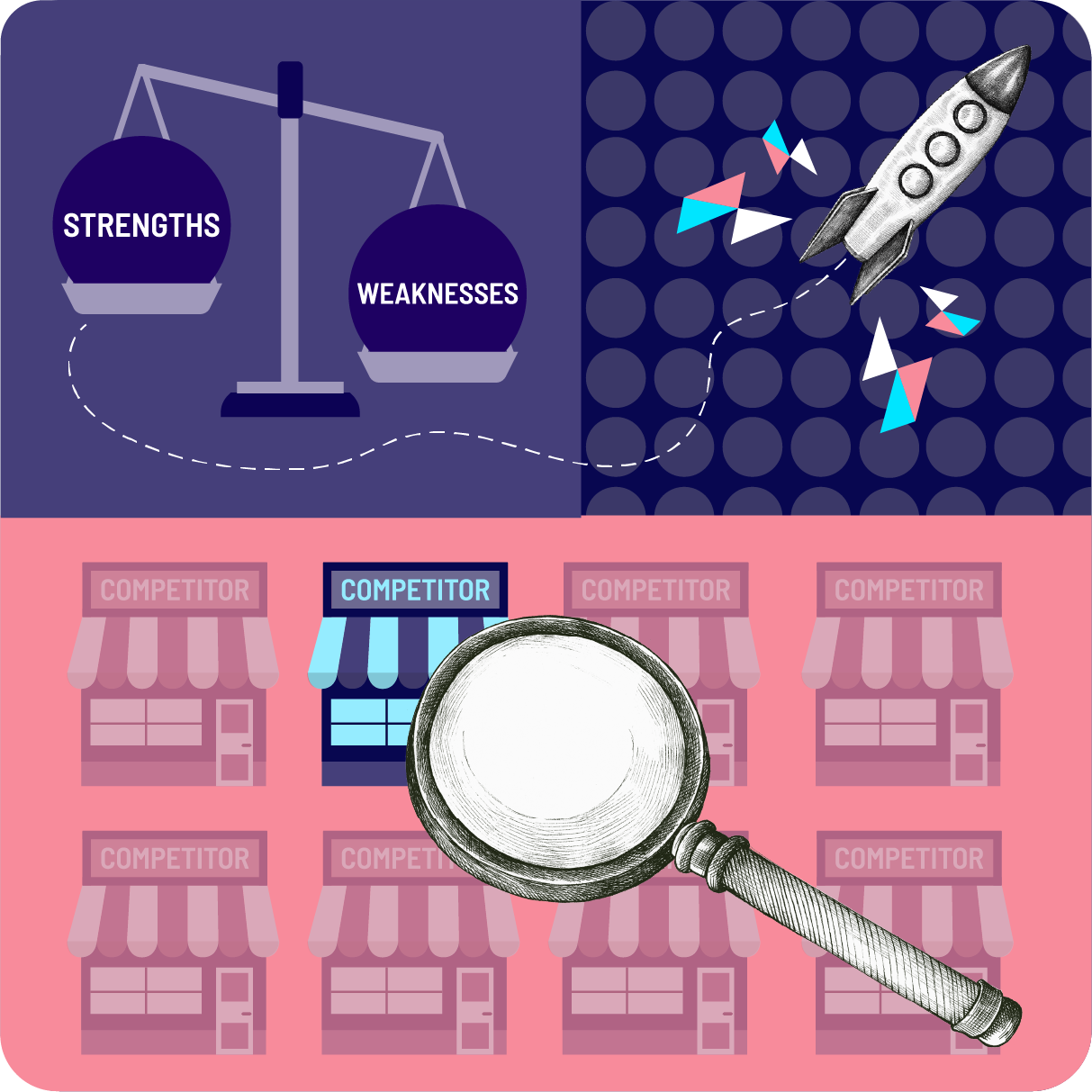Imagine stepping onto a stage, mic in hand, ready to deliver the punchline of your favourite joke, only to realise you're at a solemn poetry reading, not a comedy club. That's a bit like posting the same content across all social media platforms without considering their unique vibes. Each platform is like a different audience, with its own taste for humour, drama, or poetry.

To connect and get the applause (or likes and shares), it's crucial to match your story to the crowd. So, before you share that meme or insightful article, think—is this more of a chuckle for Instagram or a thoughtful nod for LinkedIn? Knowing your "room" makes all the difference in the world of social media storytelling.

Hi, I'm Tarek. Connect with me on LinkedIn to share ideas and keep the conversation going!
To turn this understanding into action and ensure your content always hits the right note, watch the video below. It's packed with actionable tips to help you tailor your social media stories perfectly for each unique platform audience.
Here's a cheat sheet to guide you in tailoring your content for various social media platforms:
1. Facebook
- Content Type: Informative and entertaining posts, live videos, stories, and user-generated content.
- Best Practices: Focus on community building and engagement. Use a mix of videos, images, and text to encourage shares and comments. Facebook groups are also a great way to foster a sense of community.
2. Instagram
- Content Type: High-quality photos, stories, reels, IGTV for longer videos, and user-generated content.
- Best Practices: Aesthetics are key on Instagram. Use visually appealing content with a cohesive theme. Stories and reels are great for behind-the-scenes content and more personal interactions with your audience.
3. X
- Content Type: News, blog posts, GIFs, memes, and short videos.
- Best Practices: Be concise and engaging. X is all about conversations and quick updates, so join trending topics, use relevant hashtags, and engage with your followers through replies and retweets.
4. LinkedIn
- Content Type: Professional content, industry news, company updates, and thought-leadership articles.
- Best Practices: Keep it professional and informative. LinkedIn is the platform for B2B networking, sharing industry insights, and professional growth. Long-form content performs well, as do posts that foster professional discussions.
Too much information? Take a breath; you don't have to master every channel, especially if they're not all relevant to your business. It's beneficial to be aware of the options, though. Keep scrolling for more insights further down.

5. TikTok
- Content Type: Short, entertaining videos, challenges, and trending content.
- Best Practices: Embrace creativity and fun. TikTok is all about viral content, music, and trends. Participate in challenges, use popular songs, and create engaging, short-form videos to capture attention.
6. Pinterest
- Content Type: High-quality images, infographics, and visual how-to guides.
- Best Practices: Pinterest is a visual search engine, so focus on creating pin-worthy content that drives back to your website. Use keywords in your pins and board descriptions to improve visibility.
7. YouTube
- Content Type: Educational content, how-to guides, product reviews, and entertainment videos.
- Best Practices: Focus on quality and consistency. Create content that adds value, whether it's through entertainment or information. Engage with your audience through comments and create series or themed videos to keep viewers coming back.
Exercise
To streamline your content planning across different social media platforms, feel free to use our social media content calendar template.
Start by brainstorming engaging post titles that capture your audience's interest. Clearly define your target audience for each platform, and craft unique content that resonates with them.

This template is designed to be flexible. Adjust it based on your brand's voice, audience demographics, and content creation capabilities to reach and engage your audience across various platforms.
You can download the template using this link.
Wrapping Things Up
- Know Your Audience: Tailor content to the specific interests and demographics of your platform's audience.
- Engage Actively: Respond to comments, participate in conversations, and encourage user-generated content.
- Analyse and Adapt: Use platform analytics to understand what works and refine your strategy accordingly.
By understanding the unique nuances of each platform, you can create more effective and engaging content that resonates with your target audience.



Hi, I'm Tarek. Connect with me on LinkedIn to share ideas and keep the conversation going!


















